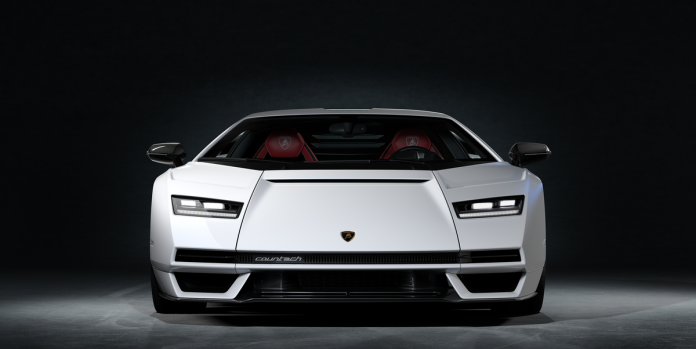If you have been interested in cars from afar, you’ve seen it by now: Lamborghini’s 2022 Countach, released to celebrate the 50th anniversary of the original, iconic supercar. And you’ve probably seen the specs: 769 horsepower from the company’s well-known 6.5-liter V-12 engine, paired with all-wheel drive and a small, 33-horsepower, capacitor-fed electric motor for some torque-filling chores. Sound familiar? The drivetrain is the same as we saw in the limited-edition Sian last year. Lamborghini will manufacture 112 of these cars at retail prices between $ 2.5 million and $ 3 million, depending on your specific equipment.
Have you stopped calculating? One hundred and twelve cars at conservative $ 2.5 million is $ 280 million. For a limited edition touring coach whose main design goes back to the Aventador that debuted a decade ago.
I don’t know what it’s like to have $ 3 million for a car. If you pay taxes, you have to make six million to spend three. But because of the way the systems have been purposely designed to funnel money up the past 30 years, the people who buy these cars basically pay no taxes and have all kinds of money to go for stupid things Blow stuff. Hence the new normal of seven-digit, limited-series production cars for the 0.0001 percent who simply buy every single one, no matter what it is. This formula works for almost every high-end automaker right now, and proves that selling a few dozen cars in the seven-figure range is much, much easier than selling a few thousand cars in the six-figure range. It is widely reported that the average Bugatti customer owns over 80 cars. When it comes to “which hypercar should I buy” internet jockeys may be arguing the answer incessantly, but in the studio the answer is simply “yes everyone”.
I spent the last paragraph describing people I know. Here I am: three years ago I scraped together every penny and bought a Lamborghini Countach from 1988, just like the poster on my wall. It’s everything I’ve ever hoped for and more: overwhelmingly reliable by Italian vintage standards, fast and comfortable. It’s reasonably useful, it costs less than you’d expect, and wherever I go with it, I win. I’ve parked next to McLaren Sennas, Ferrari LaFerraris and all sorts of Paganis – nothing stops people like a Countach. Even though my car is 33 years old, it tells me every time I drive it that it’s the first time I’ve seen one in person. The car lives up to its name, which, depending on who you ask, is an Italian exclamation that means something like “wow” and “fuuuuuuck”. I think I count as a qualified judge in Lambo’s attempt to revive this legendary model.
Despite the fact that my personal Countach is a later 5000QV model, with flared fenders and a large wing, I think Lamborghini’s best work has always been in the form of clean-sheet supercars. The first Miura, the 1971 Countach concept, the 1991 Diablo, the 2002 Murcielago, the 2004 Gallardo, the 2011 Aventador and the 2014 Huracan – all of these were clean, sexy and in their “base” form aggressive machines that moved the Lamborghini design ethos forward without giving up what it means to be a Lamborghini sports car. Each was a completely new product that was not based on any previous architecture.
Conversely, Lamborghini’s biggest design flaws were attempts to transform one model into another. The Murcielago and Aventador developments have improved performance, dynamics and lap times, but they haven’t made the cars more beautiful. The same goes for the original Countach – an anniversary car isn’t nearly as pretty as my QV, which isn’t nearly as pretty as a 1974 Periscopo. Auction prices confirm me.
And now we have this new Countach, where Lamborghini tried to translate the styling cues of its classic supercar to an Aventador – while apparently leaving all of the window glass unchanged. Honestly, who are you kidding? This is not a clean design; You can tell immediately what you did. The proportions are wrong. The “NACA channels” on the doors look like they are attached. There are “elements” of Countach, just like the Urus has “elements” of the LM002 design (like the black triangles behind the front wheels). But a Urus doesn’t look like an LM002, and that’s not a Countach.
I knew about this new Countach more than six weeks ago. Lamborghini carefully called its most loyal collectors first before showing the car, and one of those collectors called me. But with a sticker price between six and seven times the Aventador it is based on – not to mention six to seven times the cost of a great Countach on the market today – I just don’t see the value from a design, historical or performance standpoint .
Lamborghini is trying to squeeze every drop of value out of the Countach name 30 years after the last model was built. Almost certainly all 112 copies of the “new” Countach are already sold out. That means there’s never been a better time to buy an original Countach – a car that is guaranteed to turn heads at a fraction of the price. Because it’s not a relapse; It’s the original and an example of Lamborghini at its groundbreaking best.
This content is created and maintained by a third party and imported onto this page to help users provide their email addresses. You may find more information on this and similar content at piano.io

